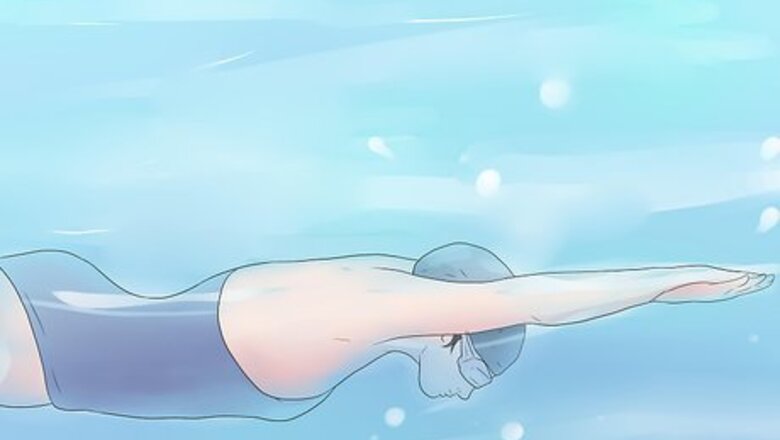
views
X
Research source
Rest is definitely important for pain relief and healing, but without some exercise, your sciatica might actually start to hurt worse. In this article, we’ll show you the best exercises you can do that won’t irritate your sciatic nerve, plus core and flexibility moves to help ease and prevent future pain. Let’s jump in!
Sciatica-Friendly Exercises
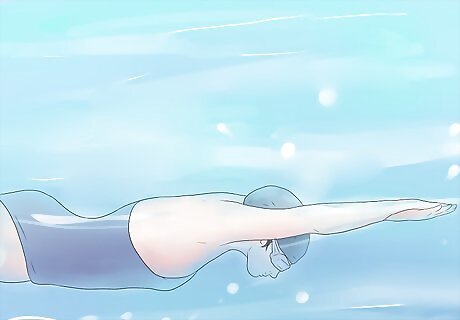
Go swimming to increase the heart rate, without stressing the back and legs. The best cardiovascular exercise for sciatica sufferers is swimming. Swimming places minimal stress on the back and the legs while still providing an effective cardio workout, that gets the heart rate up and burns calories. This gives you all the advantages of a cardio workout without compromising on comfort. For best results, try to swim for 30 minutes a day, five times per week.
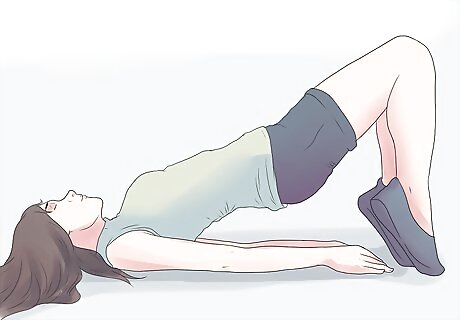
Try pilates to stretch and strengthen the muscles. Pilates is a great, low-impact way to improve the strength of your muscles without causing too much sciatic pain. Most Pilates maneuvers involve stretching the muscles using slow, smooth movements. For more information on how to do Pilates, see this article.
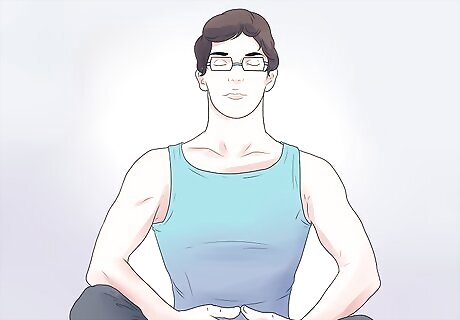
Do yoga to learn correct breathing techniques and relieve pain. Yoga is another great, low-impact form of exercise that helps to alleviate pain on the back and prevent it from recurring. Yoga is a combination of stretching and breathing techniques – making it the perfect activity for relieving sciatic pain. For more information on how to do yoga, see this article.
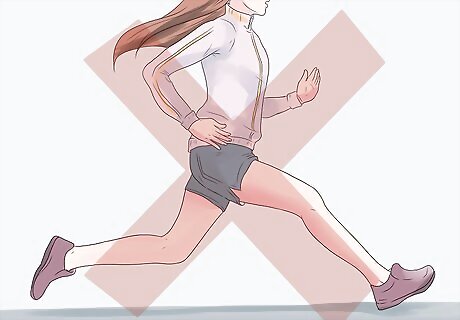
Avoid running, as it can place too much strain on the back. Although it has numerous general health benefits, running is not a recommended form of cardio exercise for people suffering from sciatica. Running is stressful and jars the lower back and legs, which may cause sciatic pain to become worse. However, going for a walk is recommended for people with sciatica, provided you warm up with dynamic range of motion exercises, stretch after the walk, and correct posture is maintained throughout the exercise.
Strengthening Your Core
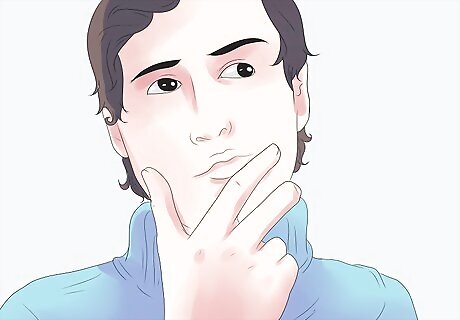
Understand why strengthening the core is important. Strengthening the core is essential in both the treatment and prevention of a slipped disc, and the accompanying sciatic pain. A strong and solid core helps to protect the spine from misalignment or injury, as the core muscles will keep the sciatic nerve in its proper place. The core also stabilizes the spine against any twisting motions and reduces the effect of daily wear and tear on the spine. As the core strengthens, you should no longer feel a one-sided shooting leg pain, which is one of the most common complaints of sciatica. The core muscles include the abs and transversus abdominis, obliques and the erector spinae muscle. These muscles are located at the front, side, and back of the abdomen and encase the spine. See below for some specific exercises you can do to strengthen the core muscles.
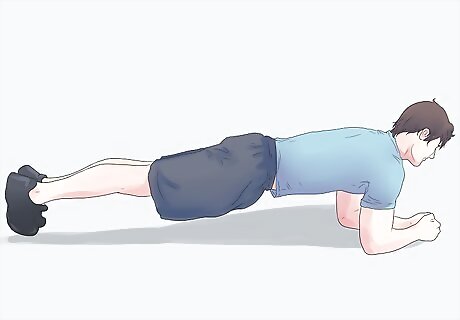
Do planks. The plank is one of the best exercises for relieving sciatic pain caused by a slip disk, as it keeps the spine in proper alignment and prevents the disc from slipping further. To correctly perform the plank exercise: Assume a traditional push-up position on a soft surface such as a mat. The head, shoulder blades, and butt must form one straight horizontal line. The hands should be directly under the shoulders and feet are kept together. Brace your abdominal muscles as if you were preparing to be punched in the gut. Hold this position for 15 seconds, making sure that your hips do not drop down at any point during the exercise. Breathe deeply as you perform the exercise, this will prevent your blood pressure from spiking. There should be no pain, numbness, or tingling sensations throughout the exercise. If you feel any of these symptoms, rest for 15 minutes then try the modified plank position, which involves holding yourself up with your elbows and knees, rather than your hand and feet. Do 3 sets of 15-second holds, resting for 30 seconds in between each set. Work your way up to doing 30-second and then 1 minute-holds.
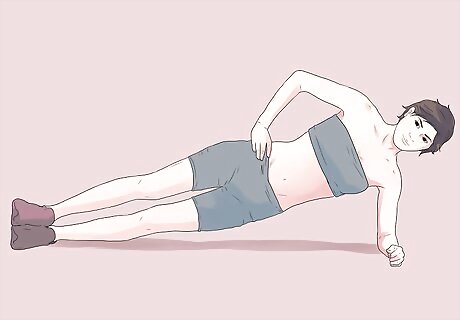
Do side planks. Once you have built up the core doing regular planks (meaning that you can comfortably hold the plank position for 30 seconds) you can progress onto side planks. This exercise is great for strengthening the oblique muscles and helps to prevent sciatic leg pain, especially during twisting movements. Lie down on your left side, keeping your body in a straight line. Make sure your left elbow is lined up directly below your left shoulder. Lift yourself up so your entire body weight is being supported by your left elbow and the outer side of your left foot. You body should form a straight diagonal line from your head to your foot. As you hold this position, keep your hips elevated above the ground with the aid of your left oblique muscles. Remember to keep your abs tight, as if you were bracing yourself for a punch in the stomach. Hold this position for 15 seconds. You shouldn't experience any pain, numbness, or tingling when performing the side plank exercise. If you do, rest for 15 minutes then try the modified side plank position. To do the modified side plank, you will bend your knees instead of keeping them straight, so you will be supporting your weight with your left elbow and left knee. Do 3 sets of 15-second holds, resting for 30 seconds in between. Switch sides and do 3 more repetitions on your right. Work your way up to 30-second holds.
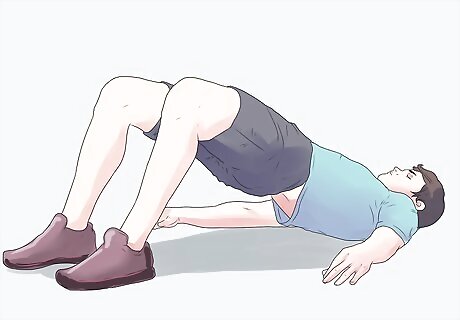
Do hip thrusts. Hip thrusts are a great exercise for working the lower back, hip, and butt muscles. These muscles are part of the posterior chain, a group of muscles at the back of the body that supports the body weight and helps you to maintain proper posture. Good posture and equal distribution of weight lessens the pressure on the bones of the lower back and helps to relieve sciatica. To do a hip thrust: Sit down on the floor with a bench or couch behind you. Rest your arms and upper back against the bench or couch. Position your feet hip-width apart with the knees bent (this position engages the hip and butt muscles later on in the exercise). Thrust your hips up until your torso and thighs are parallel to the floor. The knees should be bent and in-line above the ankles, while the feet remain in contact with the ground. Don’t forget to breathe in and out during the movement. Slowly lower your butt back towards the floor. This counts as one repetition. Do 3 sets of 15 reps daily with 1-minute rests in between. No pain, numbness, or tingling sensations should be felt during this exercise. If you do experience any of these symptoms, stop the exercise immediately and consult your physician.
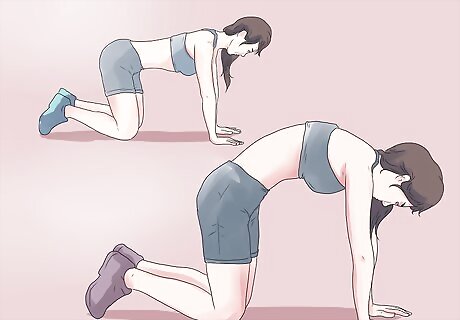
Do the cat and camel exercise. The cat and camel is a combination yoga pose that may improve spinal mobility, via flexion and extension. However, if the camel pose is performed incorrectly, it can lead to pinched nerves in the lumbar region. You should only include it as part of your exercise routine after you have developed a strong core using the three exercises outlined above. Get down on all fours on a soft surface. The hands should be placed directly beneath the shoulders, while the knees should be under the hips. Do the camel part of the exercise: suck in your abs and round your back up towards the ceiling as far as you can. The shape of your back should resemble a camel’s hump. This position stretches your spinal erector muscles. Hold this position for 5 seconds, then return to the starting position. Next do the cat part of the exercise: Arch your back by pressing your stomach towards the floor and lifting your chest towards the ceiling to arch your upper back. This strengthens the lower back muscles and stretches the abdominals. Hold the position for 5 seconds. You should feel a stretch in your abdominal area. Alternate between the cat and camel posture for 5 times each. That counts as 1 set. Do 3 sets with 2 minutes rest in between. Avoid doing this exercise if you experience any slipped disc symptoms and see a doctor for proper guidance.
Stretching Your Back and Legs
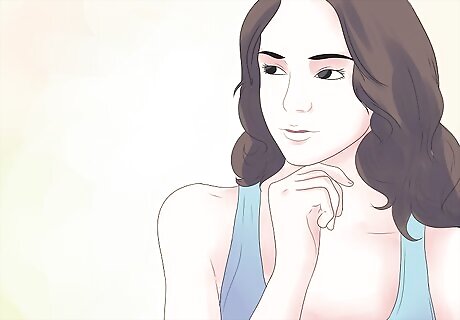
Understand the importance of stretching. People suffering from sciatica should stretch daily. Stretching helps to loosen the muscles compressing the sciatic nerve, thus alleviating pain. Stretching daily will not only improve existing symptoms, it will also help to prevent the condition from worsening.
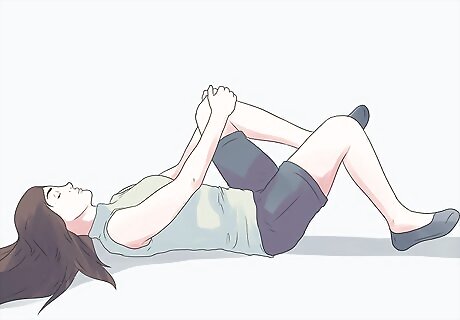
Perform knee to chest stretch. This is an easy exercise that will help to improve the flexibility of your lower back, relieving pressure on the sciatic nerve. To do this knee to chest stretch: Lie flat on your back on the floor or an exercise mat. Place a flat cushion under your head. Place your feet flat on the floor and bend your knees. Grasp your right knee with both hands and slowly bring it towards your chest. You should feel your lower back stretching. Hold the stretch for 20-30 seconds, then return to the starting position. Repeat the exercise with your right leg, then do 3 to 5 repetitions on each leg.
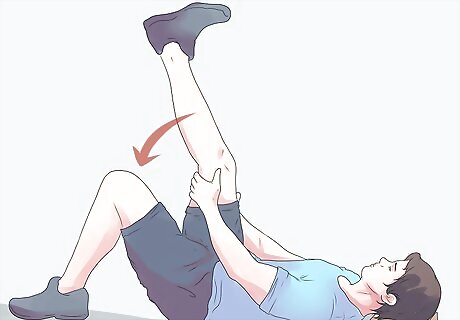
Perform a sciatic mobilizing stretch. This specific exercise will move the sciatic nerve and hamstring, helping it to find a more comfortable position. Lie on your back on an exercise mat and place a small flat cushion under your head. Keep your knees bent and your chin partially tucked in. Grab one knee with both hands and bring it closer to your chest. Grab your hamstring with both hands, then try to straighten your leg. Continue to pull your knee towards your chest as you attempt to straighten the leg. Hold this position for 20-30 seconds while taking deep breaths. Bend the knee and slowly return to the starting position. Repeat with the opposite leg, then continue for 3 to 5 repetitions of each leg.
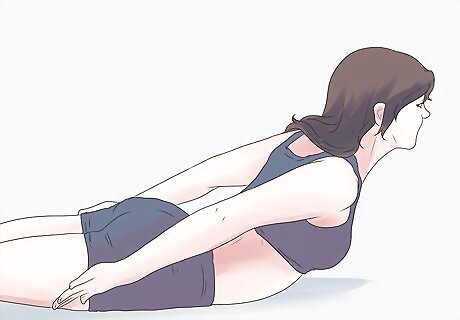
Perform back extensions. This exercise will move and stretch the spine backwards. This exercise is particularly beneficial for patients who suffer from secondary sciatic symptoms and disc herniation. Lie on your stomach, then use your elbows to prop up your head and torso. Keep your neck and back long. Keeping your neck straight and your hips on the ground, arch your back as high as comfort permits. You should feel a stretch in your lower back and stomach muscles. Hold this position for 10 seconds while practicing deep breathing. Return to the starting position, then repeat this exercise 10-15 times.
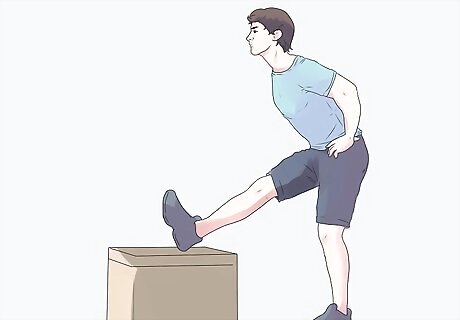
Perform a standing hamstring stretch. This exercise helps to stretch the hamstring muscles. Stand up straight in front of an elevated surface (approximately knee height), such as a stool or chair. Lift one leg and rest your heel on top of the elevated surface. Keep your knee and leg as straight as possible while your toes point upward. Lean forward, placing your hands on your knee for support. Try to keep your back straight as you do this. Hold this position for 20-30 seconds, while taking deep breaths. Repeat the exercise on the opposite leg, then continue for 3 to 5 repetitions on each leg.
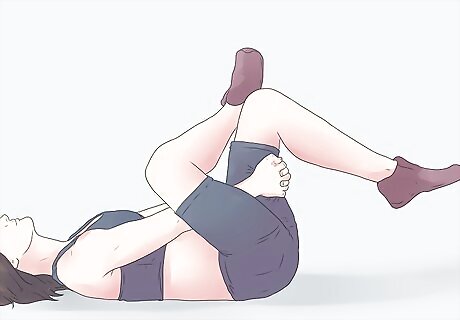
Perform a gluteal stretch. This exercise helps to keep your butt muscles flexible, which allows you to perform a wider range of movement. Start by lying on your back, with your knees bent and your feet flat on the floor. Place a small cushion under your head for support. Raise your left foot and place it over your right thigh. Link your hands at the back of your right thigh and pull the leg towards your chest. Keep your tailbone and hips on the floor throughout the exercise. You should be able to feel a stretch in your right buttock. Hold the stretch for 20-30 seconds while practicing deep breathing. Bring the foot back to the starting position then repeat the exercise with the other leg. Do 3 to 5 repetitions on each leg.
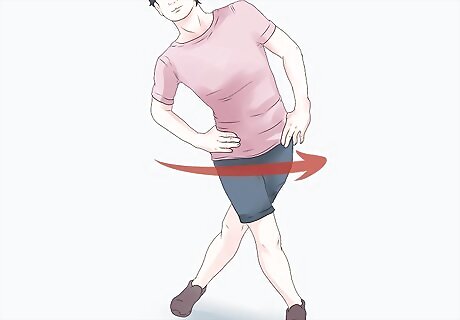
Do an Iliotibial band stretch. The iliotibial band (ITB) is a type of connective tissue that spans the hip, butt, and outer leg muscles. If your ITB is not flexible, it will limit your movement and cause the muscles to compress the sciatic nerve. This aggravates the symptoms of sciatica. To do an ITB stretch: Stand tall and cross your left foot over your right foot. Without bending the knees, bend at the hips by pushing your butt back and out, as you were closing a door with your backside. Try to maintain the natural arch of the back at all times. There should be no slouching or rounding of the back. Rounding the back puts the spine out of its proper alignment. The feet should be in contact with the ground at all times.Lifting the toes off the ground shifts the weight of the body backwards. This compresses the back and may cause aggravation of sciatica. Push the hips out as far as they can go without experiencing any pain. Don't worry if you can't go more than a couple of inches — it is normal to have very limited ITB flexibility. Hold the position for 30 seconds to a minute.
Perform sciatic nerve flossing to loosen the nerve from the tissue. This stretch helps the sciatic nerve slide through the spine unrestricted, which can improve pain and mobility. Start in a seated position with your head facing down toward the ground. To do the stretch, look up to the ceiling as you also lift your right leg, straightening it at the knee. Return to your start position to complete the stretch. Do 20-30 repetitions, then switch and repeat for the left side.
Understanding Sciatica
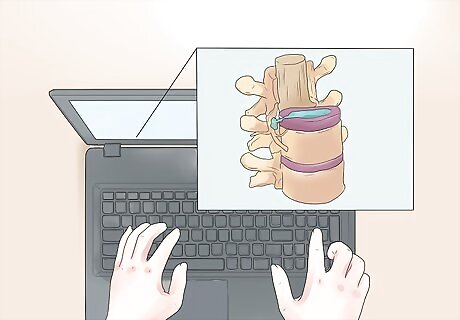
Understand what causes sciatica. There are several different root causes of sciatic pain, however they all involve irritation of the sciatic nerve, either through compression, kinking or physical trauma. Some of the most common causes include: A lumbar herniated disc: This happens when a disc in the spinal column “spills” out from its original place. This herniated disc comes in contact with the sciatic nerve, compressing it and causing pain and irritation. 'Degenerative disc disease: This condition is usually associated with aging. As the spinal disc ages, it weakens and may partially collapse leading to compression of the sciatic nerve. Piriformis syndrome: This is when the piriformis muscle (located in the buttocks) compresses the sciatic nerve. Lumbar spinal stenosis: This occurs when the spinal canal narrows in size, pushing its content outward and causing a kink in the sciatic nerve. 'Abnormalities in the spine: Anything abnormal in the structure of the lumbar spine may lead to sciatica. This may include infection, injury, tumor, internal bleeding, bone fracture or muscle weakness.
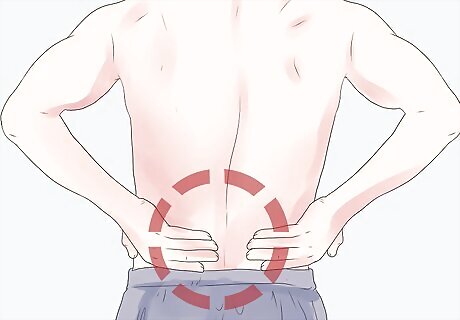
Familiarize yourself with the symptoms of sciatica. The primary symptom of sciatica is pain. The pain may be felt along the length of the sciatic nerve, which runs through the lower back, buttocks, hips and legs. Because of the sciatic pain, the patient may have difficulty of moving, bending and walking.
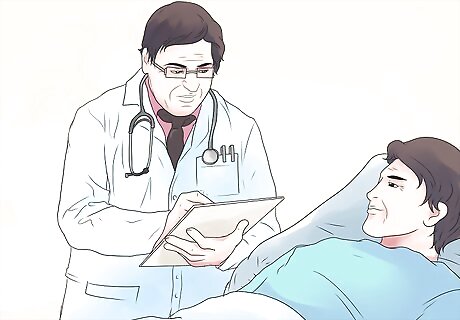
Know how sciatica is diagnosed. An accurate diagnosis of sciatica is important, as this will help the doctor to determine how the condition should be managed. The process for diagnosing sciatica will usually involve the follow: A physical examination: A physical examination may be performed, involving the straight-leg-raise test. The doctor will ask you to lie down and raise your leg slowly. The doctor will note the point at which pain is felt to determine which part of the sciatic nerve is affected. X-ray: An x-ray may be ordered to rule out fracture of the spine. MRI and CT scans: These may be prescribed by your doctor to aid in diagnosing sciatica. Detailed images of the lower back are created to learn more about the problem. Additional tests: Other nerve tests may be performed to confirm the diagnosis.These may include: velocity studies, electromyography, myelogram and evoked potential testing.




















Comments
0 comment